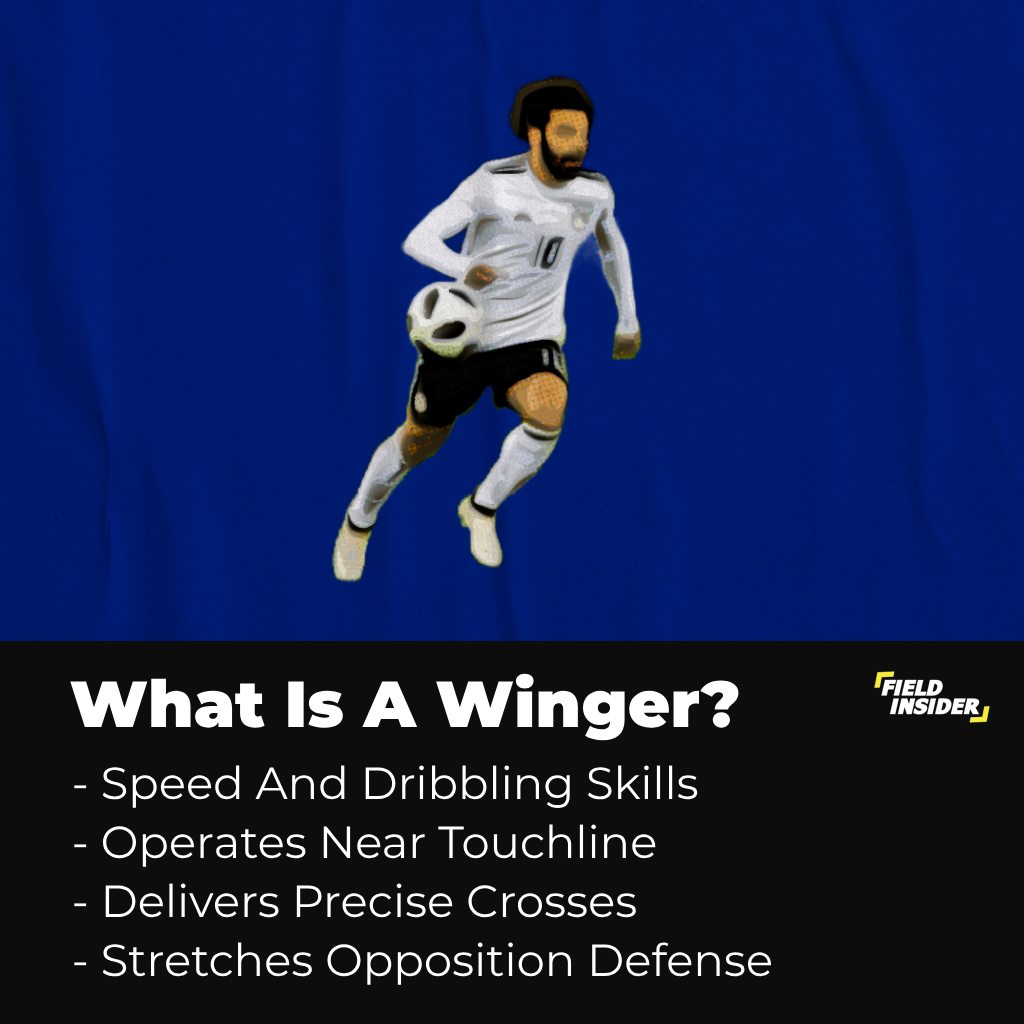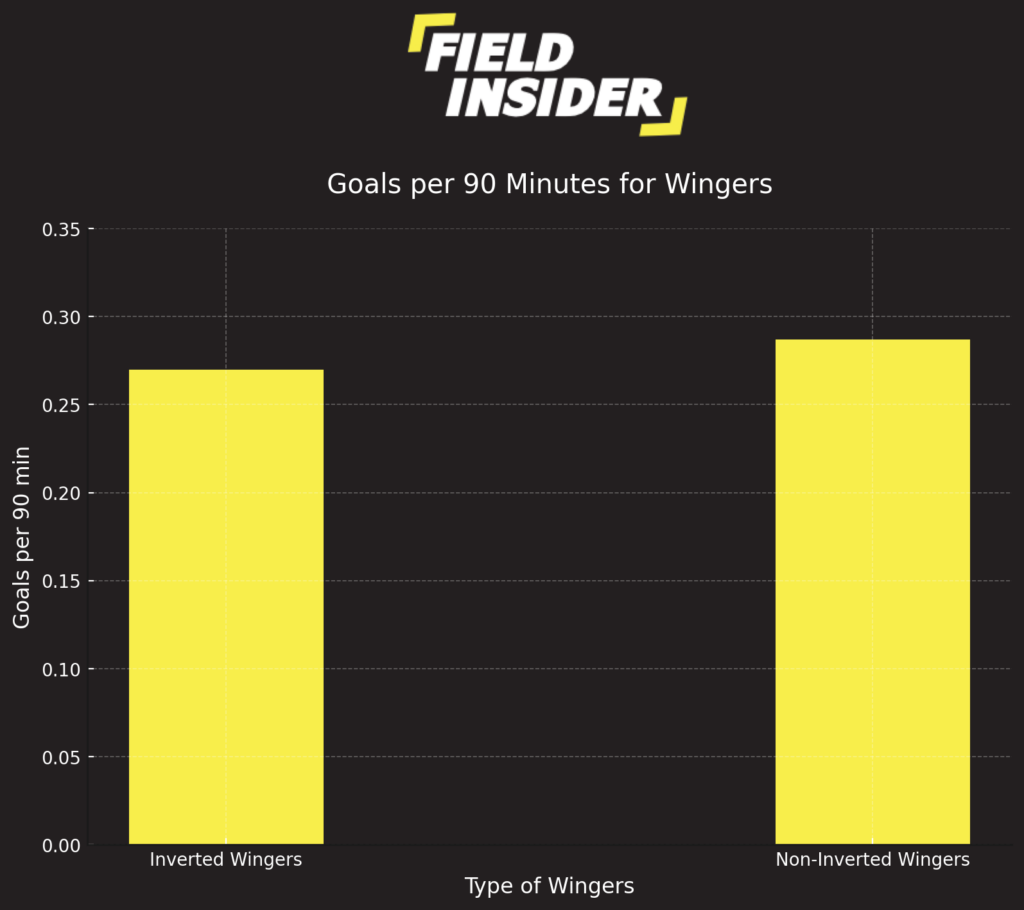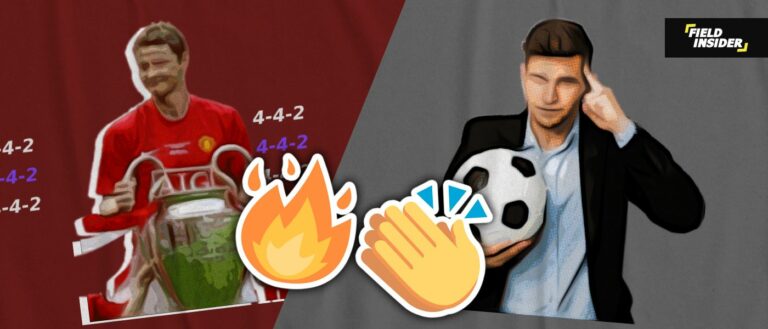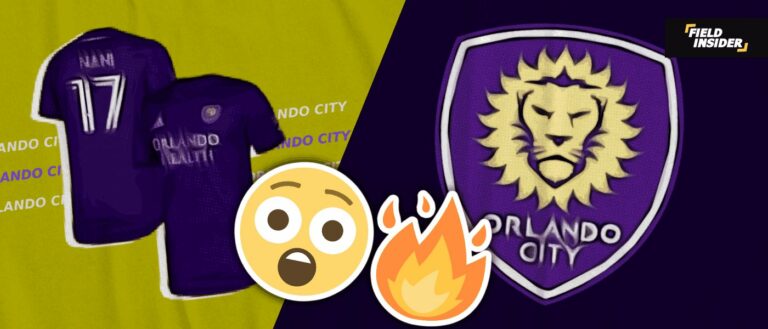Winger vs Inside-Forward: The Difference
In the dynamic world of soccer, the roles of a winger and an inside-forward hold pivotal importance in the architecture of a team’s attack. These positions, though seemingly similar, diverge significantly in responsibilities, required skills, and their overall impact on a team’s strategy.
This article delves into the nuances that distinguish wingers from inside-forwards. It offers insights into their tactical applications, player profiles, and the consequent influence on team dynamics.
Key Takeaways
| Aspect | Winger | Inside-Forward |
|---|---|---|
| Primary Focus | Width, pace, crosses | Goal scoring, combination play |
| Typical Position | Close to the sidelines, exploiting the flanks | In the half-spaces, closer to the center |
| Main Responsibilities | Stretching the defense, delivering crosses, creating one-on-ones | Exploiting gaps in defense, participating in passing sequences |
| Key Attributes | Pace, dribbling, crossing ability | Goal-scoring ability, creativity, positional intelligence |
| Tactical Setup | Essential in formations like 4-3-3 and 3-4-3 | Thrives in setups like 4-3-1-2 and 4-2-3-1 |
| Player Profiles and Examples | Mohamed Salah, Raheem Sterling: known for pace, agility, and crossing. | Lionel Messi, Thomas Müller: exemplify goal-scoring, creativity, and spatial intelligence. |
What is a WINGER ?
In soccer, a winger is more than just a position; it’s a symbol of the sport’s dynamism and creativity. Occupying the wide areas of the field, wingers are tasked with driving the attack from the flanks, using their speed, skill, and ingenuity to break down defenses and create scoring opportunities

This role is pivotal in modern soccer, offering a blend of traditional touchline play and evolving tactical responsibilities.
The Evolution of the Winger Role
Historically, wingers were primarily focused on providing width, delivering crosses from the sidelines into the penalty area for center-forwards to convert. This traditional view has evolved, with wingers now playing a more integral role in a team’s overall attacking strategy.
Today, they are not just expected to serve balls into the box but also to cut inside, take shots, and even contribute to the midfield’s defensive efforts. The evolution of the winger’s role reflects the tactical shifts within the sport. The position has adapted to the increasing speed and physical demands of the game.
What is an Inside-Forward in Soccer?
An inside-forward represents a tactical blend of midfield creativity and striking potency in soccer. It serves as a key figure in the transition from midfield dominance to attacking threat.
Positioned predominantly between the opposition’s midfield and defensive lines, inside-forwards are tasked with penetrating defenses. It creates scoring opportunities, and often finishing them. This role is a testament to soccer’s strategic depth, showcasing the importance of versatility and intelligence.
The Role’s Evolution and Significance
Historically, inside-forwards were part of a traditional forward line, primarily in formations that featured five forwards. As soccer tactics evolved, the role transformed, adapting to more fluid and dynamic attacking approaches.
Today’s inside-forwards are the heirs to this legacy, combining the goal-scoring instincts of a striker with the creative playmaking abilities. Their ability to operate in the half-spaces makes them particularly dangerous, offering a direct route to goal while also creating space for teammates.
Primary Focus: Winger vs. Inside-Forward
Wingers: Masters of the Flanks
Wingers excel in utilizing the width of the pitch. Their primary focus is to stretch opposing defenses, creating spaces for teammates. By hugging the sidelines, they demand constant attention from defenders, preventing them from condensing space centrally.
A winger’s ability to deliver precise crosses into the box is crucial, making skills in dribbling and speed fundamental. Teams employing formations like the 4-3-3 or 3-4-3 heavily rely on wingers to implement their tactical vision.
Inside-Forwards: The Goal Threat from Within
Inside-forwards, in contrast, focus on cutting into the central areas from the flanks, blurring the lines between midfielders and strikers. They excel in finding pockets of space in the half-spaces, often positioning themselves to receive the ball with a clearer path to goal.
This role demands players to have an eye for goal, the ability to link up play, and occasionally drop deeper to collect the ball, making them a multifaceted threat. Formations like the 4-2-3-1 or 4-3-1-2 maximize the potential of inside-forwards, enabling them to influence the game directly in front of goal.
Typical Position: Winger vs. Inside-Forward
Wingers: Exploiting the Flanks
Wingers operate primarily along the touchlines, often being the team’s widest players. This strategic positioning allows them to maximize the use of space on the pitch, forcing defenders to cover more ground and opening up gaps in the defensive line.
The ability to maintain width not only facilitates crossing opportunities but also enables wingers to engage in one-on-one situations against opposing full-backs, where their pace and dribbling skills can be particularly effective.
Inside-Forwards: The Central Threat
Contrarily, inside-forwards adopt a more central positioning, often starting from a wide area but cutting inside towards the goal. This movement allows them to operate in the half-spaces, which are the zones between the opponent’s midfield and defense lines.
By positioning themselves in these areas, inside-forwards can receive the ball with a better orientation towards the goal, facilitating shots or passes that disrupt the defensive structure. Formations such as the 4-3-1-2 or 4-2-3-1 are designed to leverage the strengths of inside-forwards, providing them with the freedom to roam and create chances.
Main Responsibilities: Winger vs. Inside-Forward
Wingers: The Art of Width and Crosses
The winger’s responsibility extends beyond merely occupying wide positions; they are the catalysts for stretching opposing defenses and creating openings. By maintaining width, wingers ensure that the defensive unit of the opposition is pulled apart, creating valuable spaces for midfielders or strikers to exploit.
Moreover, their ability to deliver accurate crosses into the box is crucial for teams that rely on aerial threats or the chaos created in crowded penalty areas.
Inside-Forwards: Combination Play and Goal Scoring

In contrast to wingers, inside-forwards bear the responsibility of breaking into the opposition’s defensive line through more central areas. Their role is multifaceted; not only are they expected to score, but they also need to link up play by dropping deeper or moving laterally to collect the ball, thereby integrating themselves into the team’s overall attacking maneuvers.
This position demands a high level of technical skill, spatial awareness, and the ability to execute precise passes or shots under pressure. Teams employing a 4-3-1-2 or a 4-2-3-1 formation often rely on inside-forwards to provide these crucial attacking impulses from slightly withdrawn positions.
Key Attributes: Winger vs. Inside-Forward
Wingers: Speed, Dribbling, and Crossing
Wingers must possess exceptional speed to outrun defenders and create space for themselves or their teammates. This pace is crucial for executing counter-attacks or exploiting gaps in the opposition’s defense.
Dribbling skills are equally important, as wingers often face one-on-one situations where they need to beat defenders to deliver crosses or cut back inside. Precision in crossing is the final piece of the puzzle, enabling them to supply their teammates with scoring opportunities.
Inside-Forwards: Goal Scoring, Creativity, Positional Intelligence
Inside-forwards are distinguished by their acute goal-scoring instinct. This requires not just technical proficiency in shooting but also the ability to anticipate play and position themselves optimally to receive passes or rebounds.
Creativity is another essential attribute, as inside-forwards often operate in tight spaces and need to conjure opportunities for themselves or their teammates through inventive play. Positional intelligence allows them to drift between lines undetected, exploiting spaces in the defense.
Efficacy Wingers in Modern Soccer
The chart visualizes findings from a study named “A Statistical Analysis of Inverted Wingers in Soccer”. It shows inverted wingers score fewer goals. The chart shows the efficacy of inverted vs. non-inverted wingers in modern Soccer.

It reveals that traditional wingers outscore inverted ones, with an average of 0.287 goals per 90 minutes against 0.270. This suggests traditional wingers have a positional advantage, perhaps due to a more direct line to goal. In contrast, inverted wingers often cut inside, facing denser defensive areas.
This data could influence tactical decisions, guiding coaches towards leveraging winger types to maximize scoring opportunities.
Tactical Setup: Winger vs. Inside-Forward
Winger’s Role in Formations
Wingers are central to formations that emphasize width and the exploitation of spaces along the sidelines. In the 4-3-3 formation, wingers provide the team with width, stretching the opposition’s defense and creating spaces for midfielders to operate. This setup allows for a dynamic attack.
Similarly, in the 3-4-3 formation, wingers play a crucial role in offering width, but they also have more defensive responsibilities, needing to track back to support the midfield. These formations capitalize on the winger’s pace, dribbling, and crossing abilities, making them integral to the team’s approach to breaking down defenses.
Inside-Forward’s Role in Formations
Inside-forwards, on the other hand, thrive in tactical setups that allow them to drift inside from the flanks and operate in more central areas. The 4-2-3-1 formation is a prime example, where inside-forwards can cut inside from the wings and contribute directly to the team’s goal-scoring efforts.
This formation provides inside-forwards with the freedom to roam, exploit spaces between the lines, and create overloads in central areas. Another suitable formation is the 4-3-1-2, which, while not traditionally featuring wide players, can adapt to accommodate inside-forward movements by allowing the wide midfielders or full-backs to venture forward.
Player Profiles and Examples
Notable Wingers
| Player Name | Team(s) | Playing Style | Contributions |
|---|---|---|---|
| Mohamed Salah | Liverpool | Fast, technically skilled, adept at cutting in and finishing. | Prolific goal-scorer, crucial in Liverpool’s attack. |
| Raheem Sterling | Chelsea | Agile, quick, excellent dribbler, sharp in front of goal. | Vital for creating and converting scoring opportunities. |
| Jadon Sancho | Borussia Dortmund/Manchester United | Creative, excellent dribbling and vision, precise in crossing. | Known for significant assists and breaking defenses. |
| Neymar Jr. | Al Hilal | Expert dribbler, creative playmaker, effective scorer. | Key in build-up play and finishing chances. |
| Kylian Mbappé | Paris Saint-Germain | Explosive speed, clinical finisher, excellent movement. | Leads PSG’s attack with goals and assists. |
Notable Inside-Forwards

| Player Name | Team(s) | Playing Style | Contributions |
|---|---|---|---|
| Lionel Messi | Inter Miami | Exceptional dribbling, vision, and finishing; creativity personified. | Dominates games with goals, assists, and playmaking. |
| Thomas Müller | Bayern Munich | Spatial awareness, intelligent movement, versatile attacker. | Master of finding and exploiting spaces; key assists and goals. |
| Eden Hazard | Retired | Dribbling, acceleration, and the ability to change the game. | Drives attacks with skillful play and crucial goals. |
| Di Maria | SL Benfica | Excellent crossing, precise left foot, versatile attacking roles. | Key player in creating opportunities and scoring. |
| Roberto Firmino | Al Ahli | Work rate, pressing, and linking play; not a traditional forward. | Essential in Liverpool’s fluid attacking system; goals and assists. |
Conclusion
Understanding the roles of wingers and inside-forwards is crucial for anyone involved in soccer, from coaches and players to fans. These positions, while offering different pathways to goal, underscore the sport’s strategic depth and the importance of tactical flexibility.
As soccer continues to evolve, the distinction between a winger and an inside-forward becomes more nuanced. It reflects the game’s inherent complexity and the endless quest for competitive advantage.








